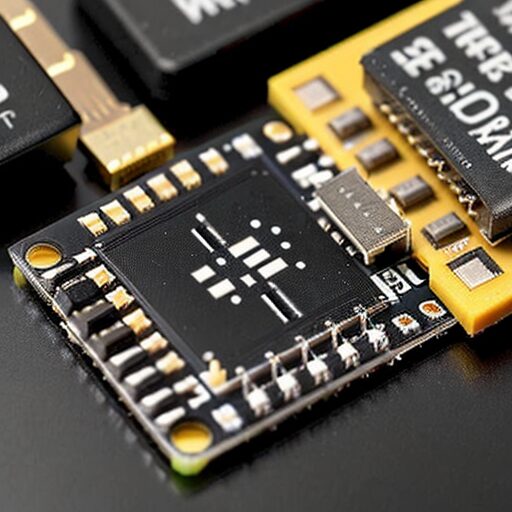In the ever-evolving landscape of cybersecurity, penetration testing plays a pivotal role in identifying vulnerabilities within wireless communication systems. One such tool that has garnered significant attention is the ESP32 Bruce Predatory firmware , designed for Wi-Fi and Bluetooth penetration testing. This article delves into what makes this firmware unique, its capabilities, and how it can be leveraged by cybersecurity professionals to enhance security testing practices.
What Is the ESP32 Bruce Predatory Firmware?

The ESP32 Bruce Predatory firmware is an open-source tool developed for use in offensive security operations, particularly focusing on IoT devices. It is built on the ESP32 chip , a versatile and widely used microcontroller unit (MCU) that supports both Wi-Fi and Bluetooth connectivity. This makes it an ideal platform for penetration testing in environments where wireless communication protocols are prevalent.
The firmware is distributed under the terms of the AGPL-3.0 license [source_id], ensuring transparency and allowing users to modify and share the software freely. It is specifically designed for legal and authorized security testing, making it a valuable asset for red teams and cybersecurity enthusiasts.
Key Features of ESP32 Bruce Predatory Firmware

1. Versatility in Wireless Protocols
- The firmware supports both Wi-Fi and Bluetooth , enabling comprehensive testing of wireless communication systems. This dual capability allows testers to identify vulnerabilities across different protocols, ensuring a holistic approach to security assessment.
2. Modular Design
- Bruce is built with a modular design, allowing for easy customization and extension. Users can add or remove features as needed, making it adaptable to various testing scenarios.
3. Focus on IoT Security
- Given its origins in the Predatory ESP32 Firmware project [source_id], Bruce is tailored for testing IoT devices. It provides tools to simulate attacks that target common vulnerabilities in these devices, such as weak encryption protocols or improper authentication mechanisms.
4. Ethical Use and Compliance
- The firmware emphasizes ethical usage by requiring users to adhere to legal frameworks and responsible disclosure practices. This ensures that the tool is used for its intended purpose of improving security rather than causing harm.
How Does It Work?
The ESP32 Bruce Predatory firmware operates by leveraging the ESP32 chip’s native Wi-Fi and Bluetooth capabilities. Here’s a breakdown of its functionality:
1. Wi-Fi Penetration Testing
- Bruce can simulate various Wi-Fi attacks, such as:
- Deauthentication Attacks: Disrupting wireless connections to test network resilience.
- Flood Attacks: Overloading the network with excessive data packets to identify performance bottlenecks.
- Session Hijacking: Exploiting weak session management in devices.
2. Bluetooth Penetration Testing
- For Bluetooth testing, Bruce can perform tasks like:
- Pairing Without User Consent: Exploiting vulnerabilities in Bluetooth pairing mechanisms.
- Data Sniffing: Monitoring Bluetooth communication to uncover sensitive information.
- Device Spoofing: Simulating malicious devices to test for authentication weaknesses.
3. Integration with IoT Devices
- The firmware’s compatibility with ESP32-based IoT devices allows it to interact directly with these devices, making it possible to test for vulnerabilities in real-world scenarios.
Setting Up the ESP32 Bruce Predatory Firmware
To get started with the ESP32 Bruce Predatory firmware, you’ll need:
- An ESP32 Development Board: Such as the ESP32-WROOM or ESP32-CAM modules.
- Programming Environment: Tools like PlatformIO (for VS Code) or Arduino IDE can be used to compile and upload the firmware to your ESP32 board.
- Basic Knowledge of Networking: Understanding Wi-Fi and Bluetooth protocols will help you interpret test results effectively.
Use Cases for ESP32 Bruce Predatory Firmware
1. Identifying Vulnerabilities in IoT Ecosystems
- Bruce can be used to identify weaknesses in IoT devices, such as insecure APIs or unpatched firmware versions.
2. Testing Network Infrastructure
- By simulating attacks on Wi-Fi and Bluetooth networks, testers can evaluate the resilience of their network infrastructure against real-world threats.
3. Educational Purposes
- The firmware serves as an excellent tool for teaching cybersecurity concepts in academic settings. It provides hands-on experience with wireless communication protocols and penetration testing techniques.
Security Implications
While the ESP32 Bruce Predatory firmware is a powerful tool, it must be used responsibly. Misuse of this tool can lead to unintended consequences, such as disrupting legitimate networks or violating privacy laws. Ethical guidelines and compliance with legal frameworks are essential when using this firmware for penetration testing.
Future Directions
The development of the ESP32 Bruce Predatory firmware is ongoing, with continuous updates to address new vulnerabilities and enhance its capabilities. As wireless communication technologies evolve, tools like Bruce will play a crucial role in ensuring the security of IoT ecosystems.
Conclusion
The ESP32 Bruce Predatory firmware represents a significant advancement in the field of penetration testing, offering a robust platform for testing Wi-Fi and Bluetooth-based systems. Its open-source nature, combined with its focus on ethical usage, makes it an indispensable tool for cybersecurity professionals. By understanding and leveraging this firmware effectively, organizations can significantly enhance their ability to identify and mitigate vulnerabilities in wireless communication networks.
This article provides a thorough overview of the ESP32 Bruce Predatory firmware, highlighting its features, functionality, and practical applications in penetration testing. For further details on setting up and using this firmware, refer to the official project documentation.
If you are looking to pick up your own build, we have them ready to go right here! If you just need a case for your own ESP32 CYD build, you can find them here!





0 Comments